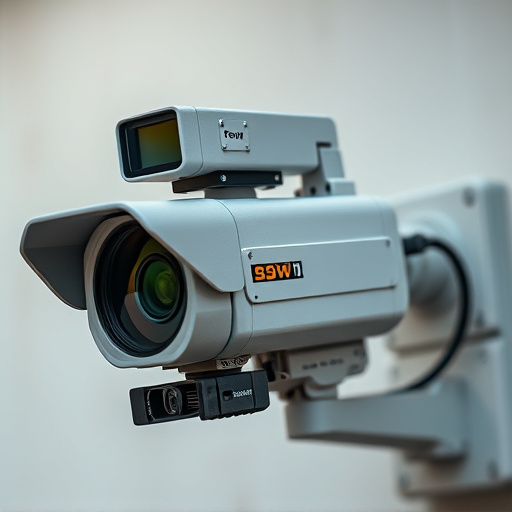Strategic placement of red lights on dummy security cameras enhances their effectiveness and curb appeal. Position them in high-traffic areas, corners, and entryways to mimic actual surveillance, deterring intruders. Red lights serve as visual indicators, improving overall security and making areas appear more monitored. Optimal placement addresses red light visibility challenges, ensuring enhanced surveillance. Regular cleaning and part replacements maintain realism and deterrent effect without requiring actual camera functionality.
“Unveil the secrets behind enhancing security with strategically placed empty security camera housing units, a.k.a. dummy cameras. This comprehensive guide explores the art of creating realistic security landscapes. From esthetics, focusing on red light design considerations, to effective placement strategies, we delve into the benefits and challenges. Learn how dummy camera positioning can deter crimes and maintain authenticity over time. Discover best practices for optimal results in terms of visibility and detection, ensuring your security system remains one step ahead.”
- Dummy Camera Esthetics: Red Light Design Considerations
- Effective Placement Strategies for Realistic Simulation
- Security Benefits of Strategically Positioned Dummy Units
- Common Challenges in Red Light Visibility and Detection
- Best Practices for Maintaining Authenticity Over Time
Dummy Camera Esthetics: Red Light Design Considerations
The aesthetic design of dummy security camera units, particularly the incorporation of red lights, plays a significant role in their effectiveness and visual appeal. When strategically placed, these red lights can serve both functional and decorative purposes. In terms of functionality, the glowing red light mimics the presence of an active camera, deterring potential intruders by indicating that the area is under surveillance.
In terms of design considerations for dummy camera red light placement, the key is to ensure realism without drawing too much attention. The lights should be positioned to create a subtle yet convincing illusion of activity. This often involves careful planning and alignment with real camera lenses if present in the housing. The right balance between brightness and subtlety ensures these dummy cameras blend seamlessly into their environment, providing both security and an aesthetically pleasing look, especially in commercial or residential settings where enhancing curb appeal is essential.
Effective Placement Strategies for Realistic Simulation
To achieve realistic simulation with empty security camera housing units, strategic dummy camera placement is key. Positioning fake cameras with visible red lights in areas that mimic actual surveillance zones can significantly enhance the illusion. This involves understanding your environment – places with high foot traffic or sensitive areas require more cameras to create a convincing setup.
Consider natural lines of sight and blind spots that real security systems might have. Dummy cameras should be placed where they would logically be positioned, such as corners, entryways, and vantage points overlooking key spaces. Consistent placement throughout the area will further bolster the simulation’s credibility, fooling both casual observers and potential intruders alike.
Security Benefits of Strategically Positioned Dummy Units
Strategically placed dummy security camera units offer significant benefits in enhancing overall security. These fake cameras act as a powerful deterrent to potential criminals, as their mere presence can discourage malicious activities. By simulating an active surveillance system, dummy units create the illusion of heightened awareness, making areas appear more secure. This is especially effective in deterring opportunistic thieves who are attracted by vulnerable locations.
The red light placement on these dummy cameras is a clever design choice. Red lights serve as visual indicators that the device is operational, even if it’s a fake. This simple tactic adds an extra layer of protection as it makes it harder for intruders to identify and disable real security systems. The strategic use of dummy units can complement existing surveillance infrastructure, providing peace of mind and improved safety measures for homes, businesses, and public spaces.
Common Challenges in Red Light Visibility and Detection
Red light visibility and detection present significant challenges for security systems, especially in dynamic environments where lighting conditions fluctuate. One common issue arises from the placement of security cameras, often positioned to capture wide areas but unable to effectively discern red lights due to angle or shadowing. This is particularly problematic in urban settings with frequent traffic, where accurate red light detection is crucial for monitoring and enforcement.
Moreover, dummy camera units, designed to deter crime by simulating active surveillance, may not always be effective if they cannot clearly capture red lighting. The strategic placement of these dummy cameras becomes less impactful without the ability to detect subtle variations in light, including the color red. This highlights the importance of considering red light visibility when deploying security measures, ensuring that technology is optimized to address these specific challenges and enhance overall surveillance capabilities.
Best Practices for Maintaining Authenticity Over Time
To ensure a dummy security camera housing unit maintains its authenticity over time, several best practices should be followed. One key aspect is proper Dummy Camera Red Light Placement. Strategically positioning a red light at the front of the housing mimics the appearance of an active camera, deterring potential intruders. This simple yet effective visual cue can significantly enhance the unit’s deterrent value without requiring actual surveillance capabilities.
Regular cleaning and maintenance are also crucial. Dust, dirt, and debris can accumulate over time, making the unit appear neglected or outdated. Using soft cloths and mild cleaning solutions to wipe down the housing periodically will help maintain its aesthetic integrity. Additionally, checking and replacing any worn-out parts promptly ensures the unit continues to function as intended and retains its realistic appearance.
Empty security camera housing units, strategically positioned with dummy cameras featuring red light design considerations, offer significant security benefits. By employing effective placement strategies and best practices for maintenance, these realistic simulations can enhance overall surveillance effectiveness while addressing common challenges in visibility and detection. In terms of dummy camera red light placement, a thoughtful approach ensures authenticity that can deter crime and provide valuable peace of mind.
